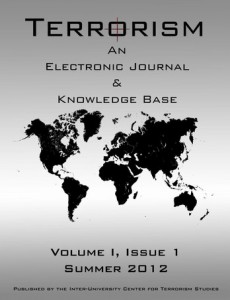
Making Intelligence Relevant for the Missions of the 21st Century
Small Wars Journal | December 19, 2012
The international challenges which threaten the security of the United States and our partners in the 21st century are not primarily posed by conventional military forces. Despite the “pivot” toward a conventional peer competitor in Asia, the predominant source of conflict in the 21st century has been and will continue to be driven by events in fragile or failing states. Of the 27 active conflicts in the world today, only one is a traditional interstate war. Due to the forces of globalization, strife and conflict in these regions now can directly impact the security of citizens within our borders. Unaddressed conflict in these regions gives rise to organized crime networks which engage in trafficking of weapons, drugs, people and WMD components. Ethnic violence results in civil wars which often lead to humanitarian catastrophes and refugee migrations. Ungoverned space may result in terrorist sanctuaries and the spread of radical ideologies and beliefs. The most likely deployment mission will not be to engage against a traditional state’s military, but to engage in an unconventional conflict against non-state foes that use asymmetric tactics.
International security organizations and individual nations have various terms and definitions to address the range of possible operations to address security problems in fragile or failing states: Peace Operations, Peace Support Operations or Stability Operations are commonly used terms. The U.S Department of Defense (DOD) describes Stability Operations as: Military missions, tasks, and activities conducted outside the United States in coordination with other instruments of national power to maintain or reestablish a safe and secure environment, provide essential governmental services, emergency infrastructure reconstruction and humanitarian relief (Department of Defense Instruction 3000.05, “Stability Operations,” September 16, 2009, para. 3). Most often, regional security organizations, such as NATO or the African Union, empowered by the legitimacy of a UN Security Council mandate, form the headquarters or nucleus for ad hoc “coalitions of the willing” to carry out these missions. ISAF in Afghanistan, the African Union Mission in Somalia (AMISOM) and the NATO-led coalition operations in Libya are recent examples of this model. Due to the nature of the missions the military, while a major actor, is only one member of a wider interagency, comprehensive, “whole of government” team assembled to address security, governance, humanitarian and economic developmental needs.
There are numerous, complex challenges to producing and disseminating timely, accurate and fused intelligence to support these operations. Each step of the intelligence process must be adapted to meet the evolving needs of commanders, decision makers, soldiers and civilian partners on the ground. In this era of declining defense budgets, what lessons should intelligence professionals be incorporating into training and educational programs to make success more likely during the next deployment to a fragile or failed state? The following eight examples provide some insights to performing well in a complex environment. It is incumbent on leaders to communicate with and empower their intelligence officers to anticipate mission and information challenges. Incorporating aspects of these examples in training and education programs will help to ensure success on the next deployment.






